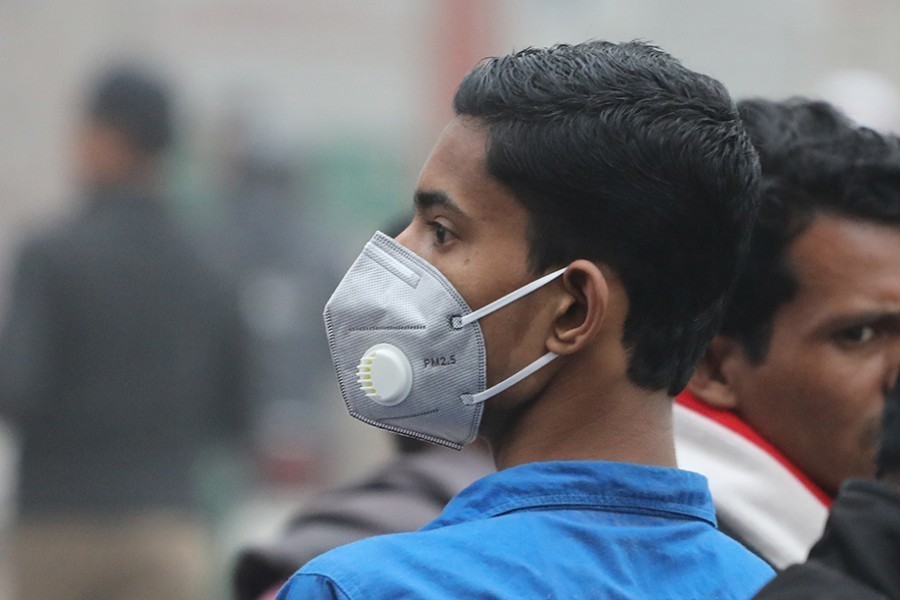SARS-CoV-2, the virus which causes the coronavirus disease (Covid-19), is predominantly transmitted through the air, according to a new study published in The Lancet journal. "There is consistent, strong evidence that SARS-CoV-2 spreads by airborne transmission. Although other routes can contribute, we believe that the airborne route is likely to be dominant. The public health community should act accordingly and without further delay,” according to the analysis by six experts from the UK, the US and Canada.
The team of experts, led by the University of Oxford's Trisha Greenhalgh, reviewed published research and identified 10 evidence to support the predominance of the airborne route.
The experts pointed out that superspreading events account for substantial SARS-CoV-2 transmission, saying “such events may be the pandemic's primary drivers.” “Detailed analyses of human behaviours and interactions, room sizes, ventilation, and other variables in choir concerts, cruise ships, slaughterhouses, care homes, and correctional facilities, among other settings, have shown patterns—eg, long-range transmission and over dispersion of the basic reproduction number (R0), discussed below—consistent with airborne spread of SARS-CoV-2 that cannot be adequately explained by droplets or fomites.”
Long-range transmission of SARS-CoV-2 between people in adjacent rooms but never in each other's presence has been documented in quarantine hotels, they said. “Historically, it was possible to prove long-range transmission only in the complete absence of community transmission,” they added.
According to the experts, asymptomatic or presymptomatic transmission of SARS-CoV-2 from people who are not coughing or sneezing is likely to account for "at least a third, and perhaps up to 59%, of all transmission globally and is a key way the virus has spread around the world."
The transmission of SARS-CoV-2 is higher indoors than outdoors and is substantially reduced by indoor ventilation. “Both observations support a predominantly airborne route of transmission,” they added. “Fifth, nosocomial infections have been documented in health-care organisations, where there have been strict contact-and-droplet precautions and use of personal protective equipment (PPE) designed to protect against droplet but not aerosol exposure,” they added.
As the sixth evidence, experts say that viable SARS-CoV-2 has been detected in the air. “In laboratory experiments, SARS-CoV-2 stayed infectious in the air for up to 3 h with a half-life of 1·1 h. Viable SARS-CoV-2 was identified in air samples from rooms occupied by COVID-19 patients in the absence of aerosol-generating health-care procedures13 and in air samples from an infected person's car,” they pointed out in the study.
They also said that other studies have failed to capture viable SARS-CoV-2 in air samples, saying sampling of airborne virus is technically challenging for several reasons. They said limited effectiveness of some sampling methods for collecting fine particles, viral dehydration during collection, viral damage due to impact forces, reaerosolisation of virus during collection, and viral retention in the sampling equipment are among them.
SARS-CoV-2 has been identified in air filters and building ducts in hospitals with Covid-19 patients, according to the study as the researchers pointed out that such locations could be reached only by aerosols. As their eighth evidence, they cited studies involving infected caged animals that were connected to separately caged uninfected animals through an air duct have shown transmission of SARS-CoV-2 that “can be adequately explained only by aerosols.”
“Ninth, no study to our knowledge has provided strong or consistent evidence to refute the hypothesis of airborne SARS-CoV-2 transmission,” the experts said. Some people have avoided contracting the coronavirus disease when they have shared air with infected people, but this situation could be explained by a combination of factors. These factors, they said, include variation in the amount of viral shedding between infectious individuals by several orders of magnitude and different environmental (especially ventilation) conditions. “Individual and environmental variation means that a minority of primary cases (notably, individuals shedding high levels of virus in indoor, crowded settings with poor ventilation) account for a majority of secondary infections, which is supported by high-quality contact tracing data from several countries,” they added.
There is limited evidence to support other dominant routes of transmission—respiratory droplet or fomite—they said. “Ease of infection between people in close proximity to each other has been cited as proof of respiratory droplet transmission of SARS-CoV-2. However, close-proximity transmission in most cases along with distant infection for a few when sharing air is more likely to be explained by dilution of exhaled aerosols with distance from an infected person,” they added.


